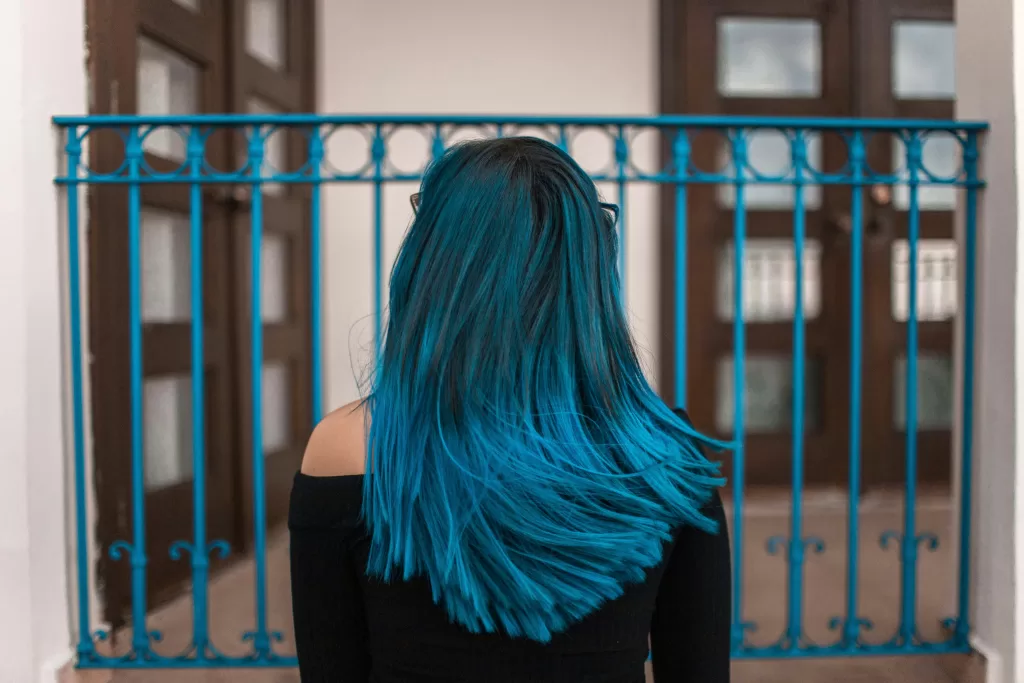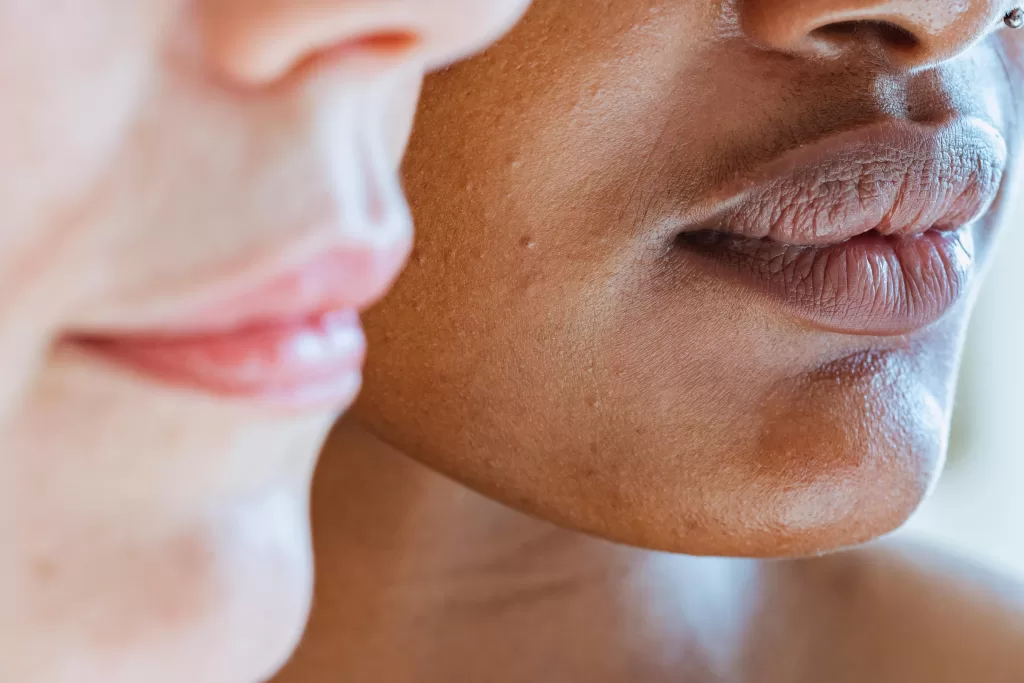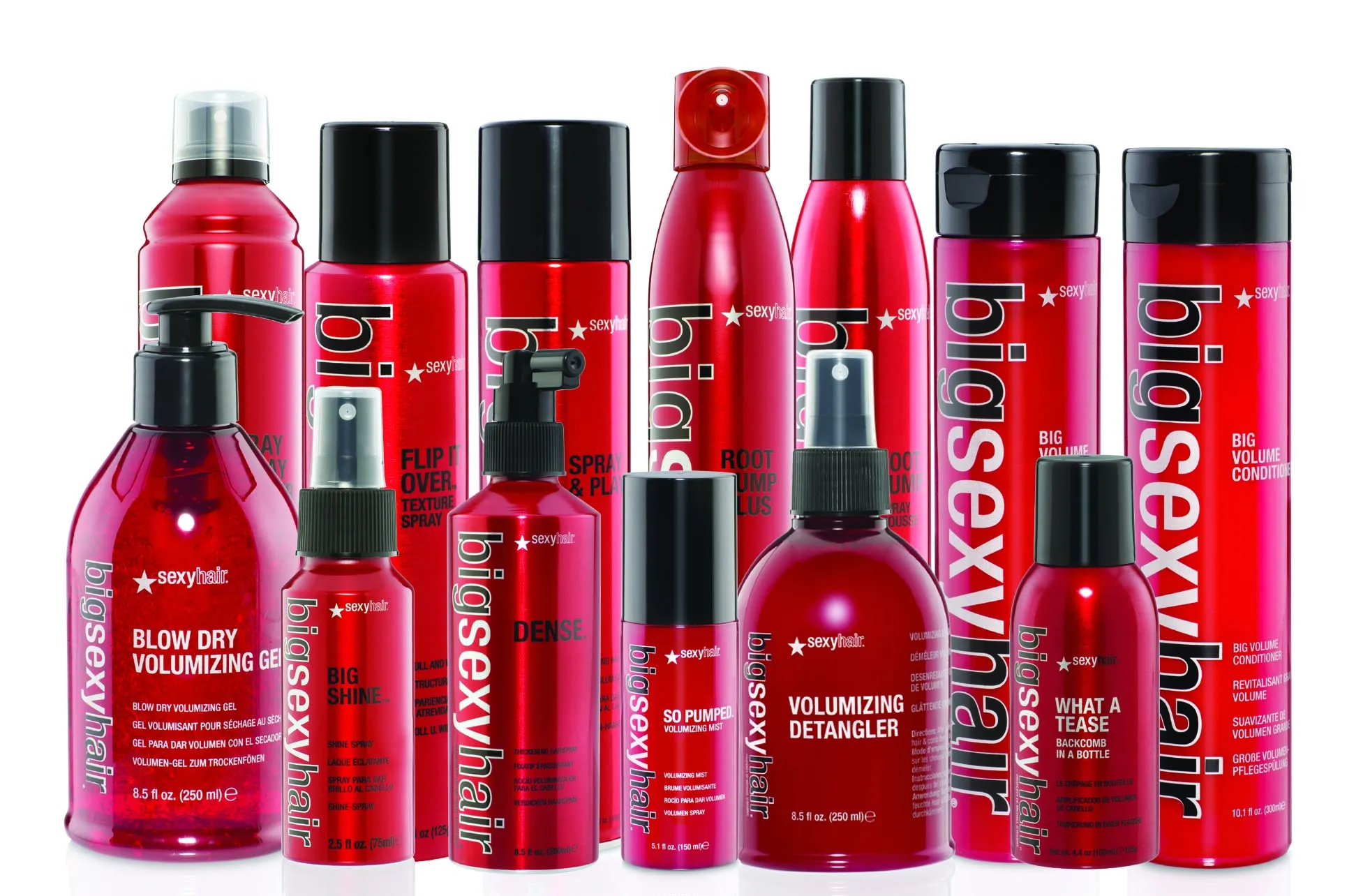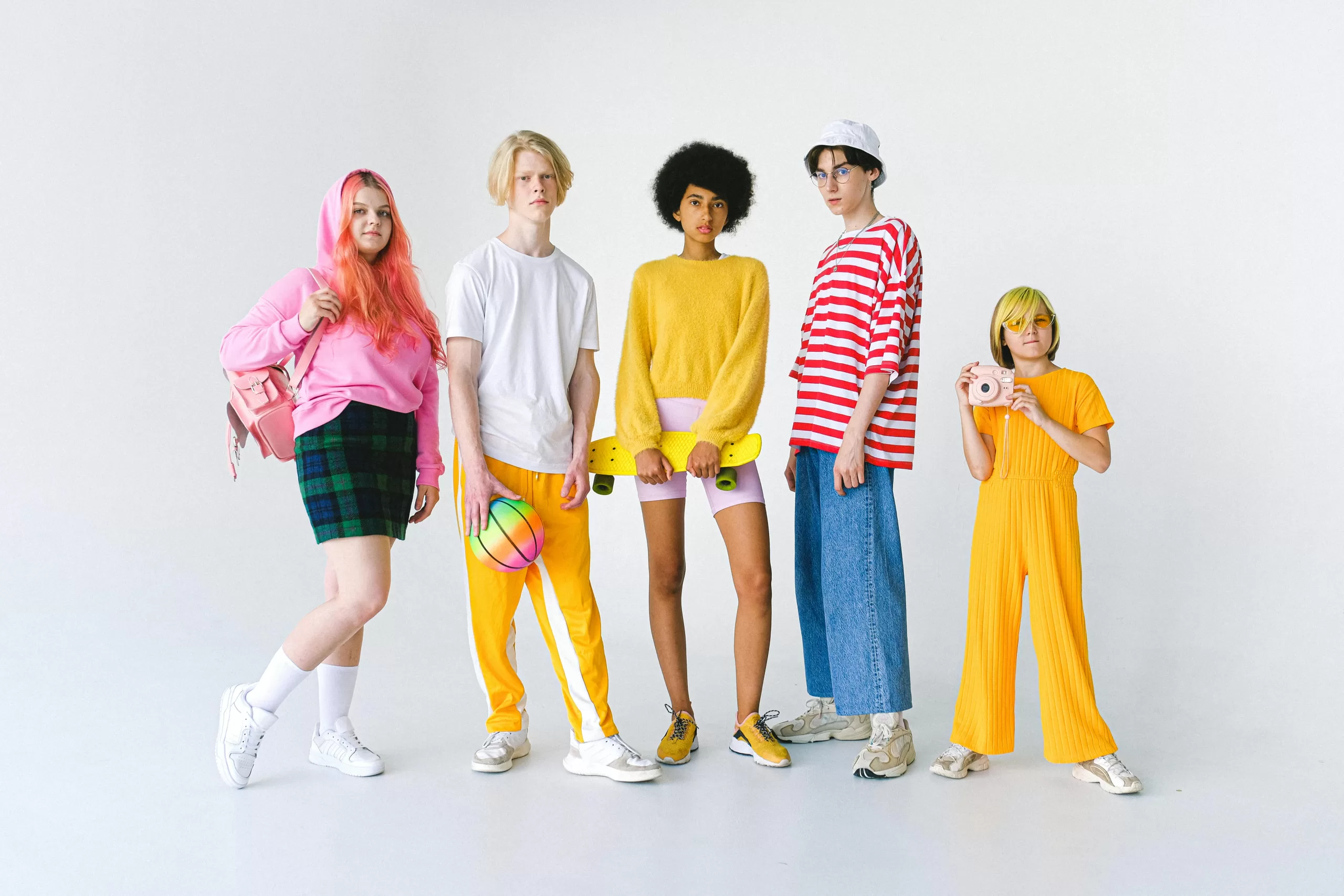Unveiling the World of Hair Color: Choosing the Perfect Dye for You
Embarking on a hair color transformation journey can be exciting, allowing you to express yourself with vibrant hues and explore a new side of your style. But with so many hair dye options available, navigating the world of color can feel overwhelming. Fear not! This comprehensive guide will equip you with the knowledge to confidently Choosing the Perfect Hair Dye with desired results.

Demystifying Hair Dyes: Understanding Your Options
Hair dyes come in various forms, each offering distinct benefits and levels of commitment. Here’s a breakdown of the most common types:
Choosing the Perfect Hair Dye
- Temporary Hair Dyes:
- Ideal for short-lived experimentation, temporary dyes typically last for a few washes. They’re perfect for adding a splash of color without a long-term commitment. Popular temporary dye brands include L’Oréal Colorista Hair Makeup, Jerome Russell B Wild Temporary Hair Color Spray, and Manic Panic Dye Hard Temporary Hair Color Styling Gel.
- Semi-Permanent Hair Dyes:
- Offering a longer-lasting color change than temporary dyes, semi-permanent options gradually fade over several weeks. They’re suitable for those who want a vibrant transformation without the permanence of a full color change. Popular brands include Manic Panic Semi-Permanent Hair Color, Arctic Fox Semi-Permanent Hair Dye, and L’Oréal Colorista Semi-Permanent Hair Color.
- Permanent Hair Dyes :
- Providing a lasting color change until new growth appears, permanent dyes are ideal for individuals committed to a specific shade. They require careful application due to their long-lasting nature. Popular permanent dye brands include L’Oréal Paris Excellence Creme, Clairol Nice ‘n Easy, and Revlon Colorsilk Beautiful Color.

Choosing the Right Dye for You
The perfect hair dye depends on your desired results and hair health. Here are some key factors to consider:
- Desired Color Change: Do you want a subtle enhancement, a dramatic transformation, or vibrant pops of color?
- Hair Health: Consider your hair’s current condition (damaged, healthy, etc.) when choosing a dye. Permanent dyes may be too harsh for already compromised hair.
- Commitment Level: Are you open to a long-term color change or looking for something temporary?
- Gray Hair Coverage: If you’re aiming to cover grays, opt for permanent dyes specifically formulated for that purpose.
Strand Test: A Crucial Step for Success
Before committing to a full head of color, a strand test is an essential step. This allows you to assess how the chosen dye interacts with your hair and provides valuable insights. Here’s how to conduct a strand test:
- Select a Strand: Choose a small, inconspicuous section of hair, preferably from the back or underneath.
- Prepare the Dye Mixture: Mix a small amount of the dye according to the instructions.
- Apply the Dye: Carefully apply the dye to the chosen strand using a disposable brush or applicator.
- Processing Time: Follow the recommended processing time in the instructions, checking the strand a few minutes before the minimum time to observe color development.
- Rinse and Assess: Rinse the test strand with lukewarm water and evaluate the color result. Look for factors like vibrancy, undertones, and potential allergic reactions.

Color Theory for Flattering Results
Understanding basic color theory can help you choose a hair color that complements your skin tone and eye color. Here’s a simplified breakdown:
- Cool Skin Tones: Opt for cool hair colors like ash blonde, blue-black, or cool brown.
- For a more daring choice, try a muted sapphire blue. This bold color enhances the natural tones in your complexion, making your skin glow. If you’re interested in a natural look with a twist, consider dirty blonde. The sandy or beige hues create a warm, approachable appearance, especially flattering for medium skin tones.
- Burgundy is another excellent option, infusing a rich wine-inspired hue that complements fair, medium, and deep skin tones alike. For something lighter, strawberry blonde blends pink, red, and gold for a sun-kissed effect perfect for fair skin.
- If you’re aiming for elegance, taupe brown offers a sophisticated blend of brown and gray, combining low maintenance with a chic aesthetic. Those with a taste for drama might opt for jet black, but consider adding blue undertones to avoid a washed-out look.
- Finally, for a touch of whimsy, lavender gives a soft purple hue that beautifully highlights blue and pink undertones, making your complexion shine. With these options, you can find the perfect shade to enhance your cool undertones and express your unique style.
- Warm Skin Tones: Warmer hair colors like golden blonde, auburn, or caramel brown tend to be more flattering.
- Eye Color: Consider your eye color for a harmonious look. Blue eyes often pair well with blonde or cool brown shades, while brown eyes can complement a wider range of colors.
Understanding Undertones: Cool, Warm, and Neutral
Undertones are the subtle hues beneath the surface of your skin that remain constant throughout your life, unlike your skintone which can change due to factors like sun exposure. Identifying your undertone is pivotal in choosing the right makeup, clothing, and even hair color.
Types of Undertones
- Warm Undertones
- Characteristics: These are often described as having a golden, yellow, or peachy tint. People with warm undertones tend to look radiant in earthy shades like orange, yellow, brick red, and warm beige.
- Complementary Colors: Browns, oranges, and golds enhance the natural warmth of these undertones.
- Cool Undertones
- Characteristics: Cool undertones have a blue, pink, or red hue. They are enhanced by colors like blues, purples, emerald greens, and cool grays.
- Complementary Colors: Jewel tones like sapphire, emerald, and amethyst can accentuate the coolness beautifully.
- Neutral Undertones
- Characteristics: A mix of both warm and cool tones, neutral undertones often have a balanced appearance. They can have varying shades that shift slightly between warm and cool.
- Complementary Colors: You have the versatility to wear a wide range of colors, from both warm and cool palettes, without clashing with your undertone.
How to Identify Your Undertone
- Vein Test: Look at the veins on your wrist. Greenish veins suggest warm undertones, bluish veins indicate cool undertones, and if it’s hard to distinguish, you might be neutral.
- Jewelry Test: Silver jewelry typically flatters cool undertones, while gold complements warm undertones. If both look good, you may have neutral undertones.
- Sun Test: You’re likely to have warm undertones if you tan easily and rarely burn. If you burn quickly, you might have cool undertones. Neutral undertones fall somewhere in between.
Understanding these differences helps you select colors that harmonize with your undertones, enhancing your natural beauty. Now you’re a step closer to finding your perfect palette!
How to Determine if You Have Cool Undertones in Your Skin
Figuring out your skin’s undertone can significantly impact your choices in makeup and clothing. Here’s how you can identify cool undertones:
- Vein Check: Take a look at the veins on the inside of your wrist under natural light. If they appear blue or purple, it’s a strong indicator that you have cool undertones.
- Sun Exposure: Consider how your skin reacts to the sun. Do you often find yourself getting sunburned rather than tanning? This tendency suggests lower melanin levels, common in individuals with cool undertones.
- Jewelry Test: Another method involves assessing which type of jewelry—silver or gold—looks better on you. If silver enhances your appearance more than gold does, you likely have cool undertones.
- Neutral Colors: Try wearing clothes or accessories in neutral shades. People with cool undertones usually find they look best in white, black, blue, or gray rather than warm, earthy tones.
- Eye and Hair Color Consideration: Often, cool undertones are paired with blue or green eyes and blonde, brown, or black hair with ash tones.
By combining these methods, you’ll have a clearer understanding of whether your skin falls into the cool undertone category. This knowledge can help streamline your style choices, ensuring you always show your best face forward.
How Can I Determine If My Complexion Has Cool Undertones?
Identifying your skin’s undertones can enhance your style and boost your confidence. Here are some tips to discover if your complexion has cool undertones:
- Vein Test: Check your wrist veins in natural light. If they appear blue or purple, this often indicates cool undertones.
- Sun Reaction: Notice how your skin reacts to sun exposure. If you tend to burn rather than tan, your skin likely has less melanin, suggesting cool undertones.
- Jewelry Preference: Observe which jewelry looks best on you. Cool undertones typically glow with silver or white gold jewelry.
- White Paper Test: Hold a piece of white paper next to your face. If your skin looks pinkish or rosy compared to the paper, you probably have cool undertones.
These methods can guide you in identifying your skin’s undertone, aiding in choices from makeup to clothing colors that best complement your natural complexion.
Hair Colors to Avoid for Cool Skin Tones
If you have a cool skin tone, characterized by pink or blue undertones, it’s crucial to select hair colors that enhance your natural beauty. Here are some colors you might want to tread carefully around:
Avoid Overly Warm Shades
Warm shades such as golden blonde, honey, and copper can clash with your cool undertones, often emphasizing redness in your skin rather than complementing it.
Steer Clear of Orange and Brassy Tones
Hair colors that lean heavily into orange or brassy hues might throw off the balance of your complexion. Instead of achieving a harmonious look, these tones can create an unflattering contrast that might not be as desirable.
Bypass Ash Shades with Excessive Gray
While some ash shades can work beautifully, those with too much gray may wash out your complexion, making it look less vibrant.
Choosing the Right Balance
To strike a perfect balance, focus on colors that enhance rather than overpower your natural tones. Cooler shades like platinum blonde or chocolate brown are typically more flattering, helping maintain your skin’s natural luminosity.
Ultimately, finding a hair color that complements your cool undertones can make all the difference in highlighting your natural beauty.
How Can I Tell If My Hair Color Is Warm or Cool?
Determining whether your hair color is warm or cool is key to achieving a harmonious and flattering look. Here’s how you can assess it:
1. Examine the Undertones:
- Warm Hair Colors: These shades often contain red, orange, or gold undertones. They can enhance your complexion with a sunlit glow. Examples include honey blonde, golden blonde, auburn, and chestnut brown.
- Cool Hair Colors: These shades typically have blue, violet, or green undertones. They impart a sleek, refined vibe and suit cool complexions. Think platinum blonde, ash brown, or jet black.
2. Consider How It Complements Your Skin Tone:
- Skin tones with pink or blue undertones often pair well with cool hair colors.
- Those with peachy, golden, or olive undertones tend to glow with warm hair colors.
3. The Jewelry Test:
- Try on some jewelry to see if gold or silver enhances your appearance more.
- Silver jewelry usually complements cool-toned hair colors.
- Gold jewelry frequently pairs better with warm-toned hair colors.
4. Natural Light Test:
- Stand in natural light and observe your hair’s reflection. Warm shades will reflect more yellows and golds, while cool shades will reflect blue or silvery tones.
Conclusion
Understanding these subtle distinctions can help you choose a color that not only complements your natural features but also aligns with your personal style. Experimentation and a keen eye are your best tools!
How to Maintain and Preserve Hair Color for Cool Undertones
Maintaining that stunning shade you’ve chosen requires a little effort and the right products. If your complexion has cool undertones, here’s how you can keep your hair vibrant and fresh.
1. Use Color-Enhancing Treatments
For a quick color refresh, try using color-depositing masks or conditioners. These temporary treatments infuse your hair with a subtle tint, enhancing your shade without the commitment. They not only add dimension but also help prolong the life of your initial color.
2. Opt for Sulfate-Free Shampoos
Gentle cleansing is key to preserving your color. Sulfate-free shampoos are formulated to clean your hair without stripping away the vibrant pigments. They ensure that your color remains vivid and less prone to fading.
3. Combat Brassiness
If you’re battling unwanted orange or brassy tones, especially in balayaged or highlighted hair, consider using a blue or purple-toning shampoo. These color-correcting shampoos neutralize brassiness and keep your color cool and balanced.
4. Add a Protective Shine
Finishing your style with an anti-frizz shine spray can give your hair a glass-like finish, keeping your strands smooth and shimmery. This also helps to reflect light, enhancing your hair’s vibrant color.
5. Hydrate and Restore
A lightweight conditioner can be particularly beneficial if your hair is dry or damaged. Look for products that provide instant hydration and nourish your strands, preserving the integrity and shine of your new color.
By following these steps and using the right products, you can extend the lifespan of your beautiful hair color while ensuring it compliments your cool undertones perfectly.
Do Warm Hair Colors Look Good on Cool Skin Tones?
Absolutely, warm hair colors can enhance cool skin tones when applied with the right technique. It’s all about finding harmony and balance. Here’s how:
- Customization is Key: A skilled stylist can tailor warm hues to complement cool undertones. Rather than a one-size-fits-all approach, they’ll adjust the intensity and shade to suit your unique complexion.
- Professional Expertise: It’s crucial to consult a highly experienced stylist for this transformation. Their expertise can prevent the warmth from overwhelming your natural coolness, avoiding a washed-out appearance.
- Color Techniques: There are techniques like balayage or lowlights that blend warm and cool tones. This subtle mix can make your hair stand out while still flattering your skin.
- Trial and Error: If you’re hesitant, start with a semi-permanent dye. It’s a great way to test how different shades suit your skin without committing long-term.
In summary, with the right approach, warm hair colors can indeed brighten up those with cool skin tones, offering a radiant and stylish look.
Tips for Choosing a Hair Stylist for Cool Undertones
- Research Their Experience: Look for a stylist with proven experience in handling cool undertones. Check online portfolios, reviews, and testimonials. You want someone who demonstrates a clear understanding of how different colors interact with varying complexions.
- Consultation is Key: Schedule a consultation before committing. During the meeting, ask questions about their previous work with cool undertones and how they plan to complement your natural complexion. This is also an opportunity to gauge their knowledge and confidence.
- Portfolio Perusal: Examine their portfolio closely. Look for past clients with similar skin tones to yours. This helps you assess their ability to create flattering looks without causing a washed-out appearance.
- Ask for Recommendations: Reach out to friends or family who have similar skin tones and often color their hair. Personal recommendations can lead you to trusted professionals.
- Education and Certification: Verify that the stylist has the proper training and certifications. Continuous education in color theory and hair styling trends is a great sign of dedication to their craft.
- Trial Session: If possible, book a trial session with the stylist. This can be as simple as a small section or subtle color enhancement. It allows you to see firsthand how their choices look against your skin tone.
By taking these steps, you increase your chances of finding a stylist who can enhance your hair color in a way that complements and brightens your natural complexion.
Hair Dyeing Tips and Techniques
For a successful hair color transformation at home, follow these essential tips:
- Prepare Your Hair: Ensure your hair is clean and free from styling products before applying the dye. Deep condition your hair in the days leading up to the application for optimal moisture.
- Section Your Hair: Divide your hair into sections to ensure even application. Start from the roots and work your way down to the tips.
- Follow the Instructions: Strictly adhere to the instructions provided with the hair dye, paying close
Embrace Your New Look with Confidence!
With the knowledge you’ve gained about hair dyes and application techniques, you’re well-equipped to embark on your hair color transformation journey. Remember, careful planning and execution are key to achieving your desired results. So, have fun experimenting with color, and flaunt your vibrant new look with confidence!
Choose the Perfect Hair Dye: General Hair Dye FAQs
- What is the difference between temporary, semi-permanent, and permanent hair dye?
- Temporary: Lasts a few washes, perfect for experimentation.
- Semi-Permanent: Fades gradually over several weeks, ideal for a longer-lasting change.
- Permanent: Provides a lasting color change until new growth appears, requiring a commitment.
- How do I choose the right hair color for my skin tone and eye color?
- Cool Skin Tones: Opt for cool colors like ash blonde, blue-black, or cool brown.
- Warm Skin Tones: Warmer colors like golden blonde, auburn, or caramel brown are more flattering.
- Eye Color: Consider your eye color for a harmonious look. Blue eyes often pair well with blonde or cool brown shades, while brown eyes can complement a wider range of colors.
To choosing the Perfect Hair Dye: How often can I dye my hair?
- The frequency of dyeing depends on the type of dye and your hair’s health. It’s generally recommended to wait at least 4-6 weeks between dyeing sessions to avoid damaging your hair.
- Can I dye my hair if it’s chemically treated (e.g., permed, straightened)?
- It’s best to consult with a professional hairstylist before dyeing chemically treated hair, as it may be more fragile and susceptible to damage.
- How can I maintain my hair color and prevent fading?
- Use color-safe shampoos and conditioners to help preserve your hair color.
- Avoid excessive heat styling, as it can contribute to color fading.
- Protect your hair from the sun’s rays by wearing a hat or using hair products with UV protection.
Hair Dyeing Techniques and Tips For To Choose the Perfect Hair Dye:
- What is a strand test, and why is it important?
- A strand test allows you to see how the dye will react with your hair and assess the final color result before committing to a full head of color.
- How do I apply hair dye evenly?
- Divide your hair into sections and apply the dye evenly, starting from the roots and working your way down to the ends. Use a wide-tooth comb to distribute the color evenly.
- How long should I leave the hair dye on?
- Follow the specific instructions provided with the hair dye product. The processing time may vary depending on the desired color intensity and hair type.
- What should I do if I don’t like the hair color result?
- Consult with a professional hairstylist to discuss potential solutions, such as using a color remover or applying a color-correcting product.
Remember, it’s always a good idea to do a patch test before dyeing your hair to check for any allergic reactions.

How Can I Choose the Best Hair Products for My Hair?
The Ultimate Guide to Choosing Hair Products Choosing the right hair products can seem overwhelming with the endless options available. However, selecting the best products for your hair doesn’t have to be difficult once you understand your hair type, texture, and specific needs. In this comprehensive guide, we’ll walk you through everything you need to…
Find more articles like this @ Where And How Resources
